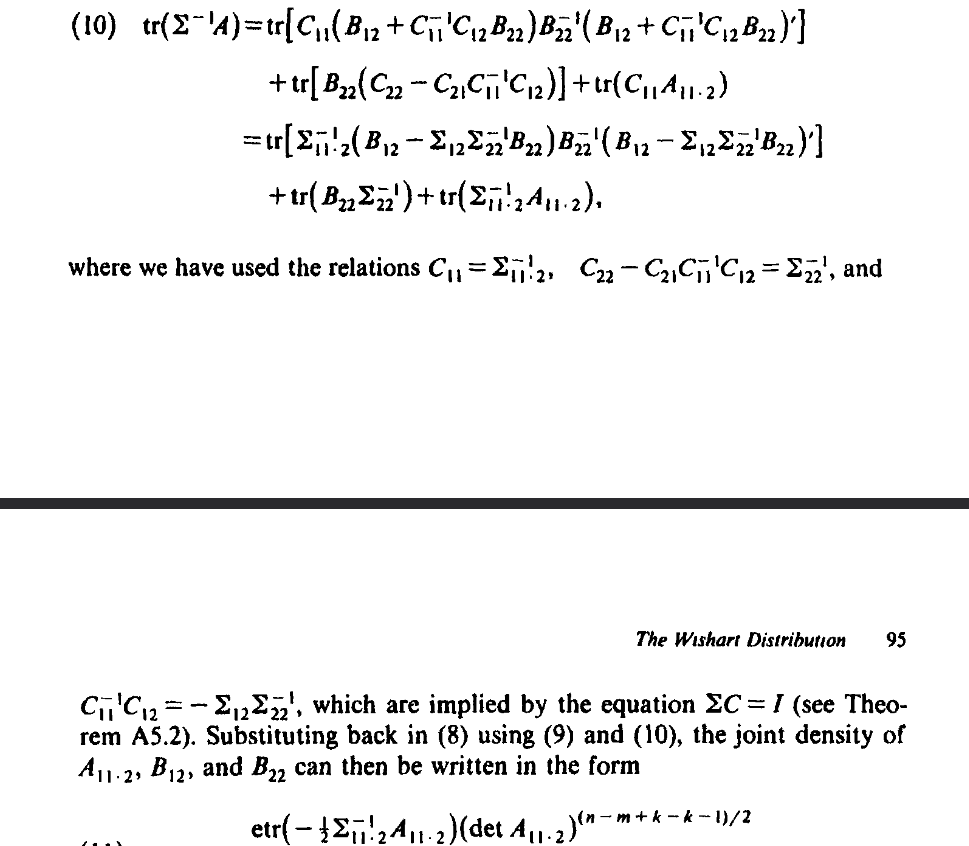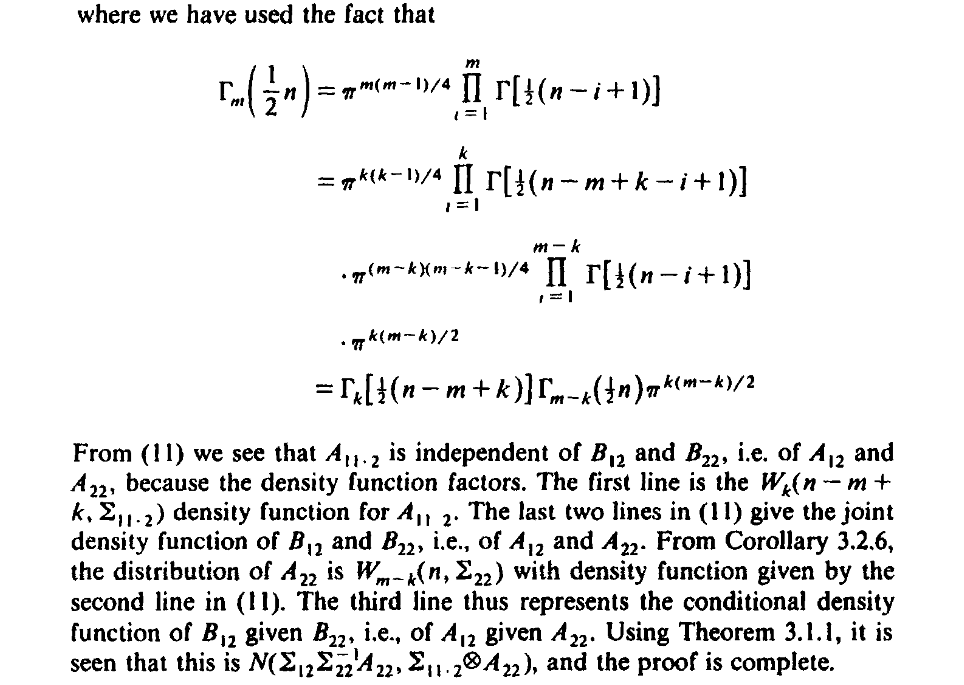I once took a course that included zillions of exercises concerning the Wishart distribution, but as far as I recall, never mentioned the Wishart density. I asked something about that in this question, in which I mentioned that bounds of integration might be messy.
A reply said the measure with respect to which one integrates (in the non-singular case) is $$ \prod_{i,j\,:\,1\,\le\,i\,\le\,j\,\le\,p} dx_{i,j}. $$
My question here is about those "messy" bounds of integration.
I'm going to make a guess and see whether someone who knows something can confirm it or deny it or (maybe the best option) improve upon it.
We are integrating over the space of matrices $(x_{i,j})_{i,j \, \in\, \{1,\,\ldots,\,p\}}$ that are symmetric and positive-definite.
Suppose such a matrix is $$ \left[ \begin{array}{cc} \underset{p_1\times p_1} A & \underset{p_1\times p_2} B \\[8pt] \underset{p_2\times p_1}{B^T} & \underset{p_2\times p_2}C \end{array} \right]. $$
Then $A$ and $C$ are symmetric and positive-definite, and $B$ must be such as to make the entire matrix above positive-definite.
There is this one-to-one correspondence: $$ \left[ \begin{array}{cc} A & B \\[8pt] B^T & C \end{array} \right] \longleftrightarrow \left( \underset{p_1\times p_1} A,\quad \underset{p_2\times p_1} {B^T A^{-1}}, \quad \underset{p_2\times p_2} {C- B^T A^{-1} B} \right) = (J,K,L). $$ So $J$ and $L$ are positive-definite.
The second component of this triple occurs in an expression for conditional expected value and the third is the corresponding conditional variance.
It follows that \begin{align} A & = J, \\ B & = JK^T, \\ C & = L + KJK^T. \end{align} The domain of $(J,K,L)\mapsto(A,B,C)$ is a Cartesian product whose first and third factors are the sets of all positive-definite symmetric real matrices of the appropriate sizes and whose second factor is the set of (here is the interesting part) all $p_2\times p_1$ real matrices $K.$ (Easy exercise: Prove that.)
So we have reduced the problem of bounds of integration to that of bounds of integration for smaller positive-definite symmetric real matrices, plus integrating over a space of matrices in which the bounds for every entry are $-\infty$ and $+\infty.$
This can be iterated until we have a Cartesian product of $p=p_1+p_2$ factors each of which is $(0,+\infty),$ and $\binom p2$ factors each of which is $(-\infty,+\infty).$
My questions are: Is this useful? Is this a standard technique?






